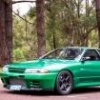Brake Caliper Adapter Fab, Sydney
Announcements
-
Similar Content
-
Latest Posts
-
yeh they are 235/45/17 up front and 255/40/17 in the rears. I still didn't get my answer if i can fit a 18x9 up front. I want to get 4 of this and see if they will fit before committing as they didn't see an 18x8 as an option but there is a 18x9.5 also. Enkei RS05-RR 18x9 35mm ET 5x114.3 75.0 Bore Matte Gunmetal Wheel
-
This. The R34 handbrake icon DOES come up when the brake fluid level is low. You might be sitting right on that threshhold. I have been down this diagnosis path and this was the solution (and it was pretty much as full as your picture is to begin with).
-
Unfortunately the cavaet to that is that while any scan tool should be able to read the code, the workshop will need a consult plug to OBD socket adapter. You don't have a location on your profile, where are you based?
-
@Haggerty this is your red flag. In MAP based ECU's the Manifold pressure X RPM calculation is how the engine knows it is actually...running/going through ANY load. You are confusing the term 'base map' with your base VE/Fuel table. When most people say 'base map' they mean the stock entire tune shipped with the ECU, hopefully aimed at a specific car/setup to use as a base for beginning to tune your specific car. Haltech has a lot of documentation (or at least they used to, I expect it to be better now). Read it voraciously.
-
I saw you mention this earlier and it raised a red flag, but I couldn't believe it was real. Yes, the vacuum signal should vary. It is the one and only load signal from the engine to the ECU, and it MUST vary. It is either not connected or is badly f**ked up in some way.
-





Recommended Posts
Create an account or sign in to comment
You need to be a member in order to leave a comment
Create an account
Sign up for a new account in our community. It's easy!
Register a new accountSign in
Already have an account? Sign in here.
Sign In Now